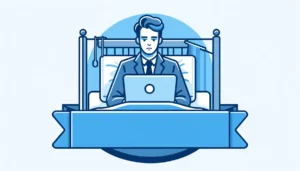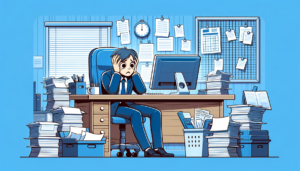Is Your Organization Causing Mental Distress?
- 4 Min Read
We can’t always see what’s going on under the surface. Is it possible that your organization could be harming your employees? Jazmine Wilkes, founder of HRJazzy, takes a closer look at how work can cause mental distress, and what People Leaders can do about it.
- Author: Jazmine Wilkes
- Date published: Oct 21, 2019
- Categories

By Jazmine Wilkes, Founder of HRJazzy.
According to the Anxiety and Depression Association of America, “Anxiety disorders are the most common mental illness in the U.S., affecting 40 million adults in the United States age 18 and older, or 18.1% of the population every year.”
Anxiety could be labeled as the easiest mental distress most people can associate with, especially in the workplace. But, it’s not the only one. Mental Distress is possible in various forms and not solely defined by what your organization deems acceptable.
Mental health awareness in an organization begins before an employee steps foot in the door. To be an organization that shows true value in their employees, stressing the importance of mental health, and providing your employees with safe outlets in the workplace is crucial.
Once candidates find a possible position, there is a possibility that they will be put through multiple rounds of interviews before receiving a basic email informing them the organization decided to go with someone else. It’s not to say candidates shouldn’t be thoroughly interviewed before being asked to join the organization. But, if we look at our hiring process, are we causing our candidates and our managers more stress than necessary.
We are creating mental piles of stressors in our organizations and only talking about or reading articles on how to create a fix, instead of doing the work.
Workplace wellness is more than a physical requirement
Wellness in the workplace has blossomed into conference and workshop themes throughout the human resources path. Paying attention to not only the physical but also the mental wellbeing of every employee should be considered part of the corporate wellness plan.
Employees have the right to express their emotions and fears in the workplace and employers should encourage it, carefully, especially when it deals directly with the organization. Multiple studies are showing helping employees improve their mental health is beneficial not only to the employee but also to the entire company.
What works for you, might not work for all
When it comes to mental health awareness in or outside of the organization, there isn’t a one fixes all cure. And, the goal should not be to “cure” or “fix” your employees when rolling out any plans. Only to make the workplace better and have a strong environment for people to thrive in their daily work lives.
Employees spend the majority of their day in your corporate office, making sure they have what they need to succeed, which should be a basic benefit to all.
Being dedicated to mental health in the workplace means providing various and successful solutions. Quick walks around the building/walking trails near the workplace, flex time, group exercises, quiet time, music, soul cycle, kickboxing (not with coworkers), longer lunchtimes, lunch options available to the organization, etc. We can’t determine what works for our employees without a discussion and experimentation.
Everyone plays a part
It is also important for the employees to play an active part in the conversation. If employees aren’t informing the organization of the problems or providing solutions, there can be no good answers.
Paying attention to your employees’ mental health is more than a week of stress balls and a 3-day therapy EAP that isn’t providing someone enough time to feel comfortable with their therapist. Mental health needs to be a continuous conversation in the workplace.
Mental Health awareness shouldn’t be looked at as a quarterly task to check off the list, but a true investment into a better workplace. Open the lines of communication and as leaders, be willing to face the harmful behavior you’re exhibiting. To be a better organization, you must create the best environment for all.









